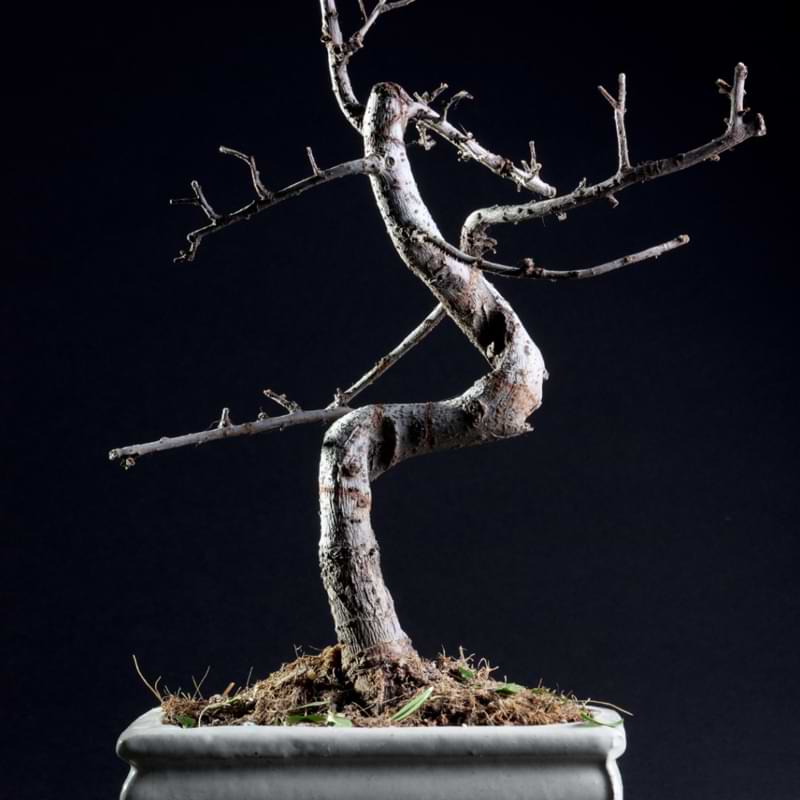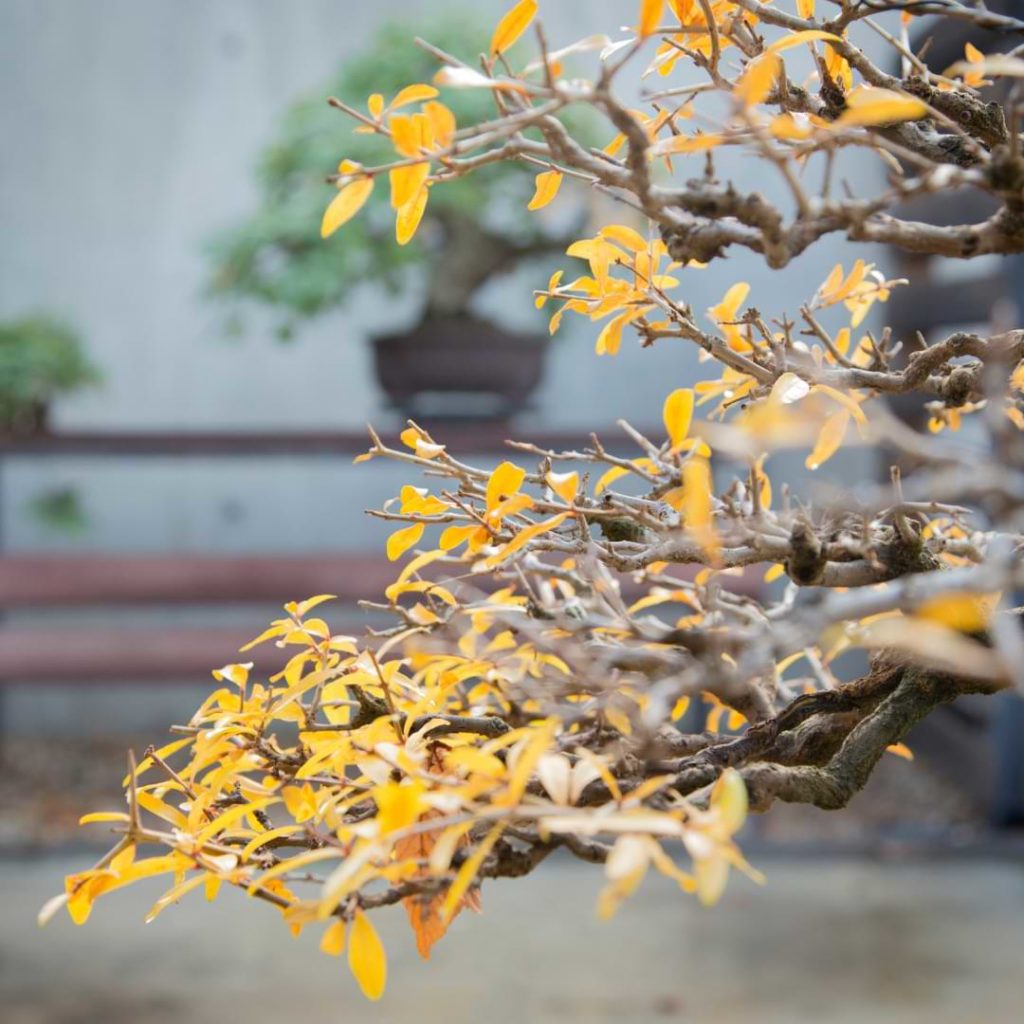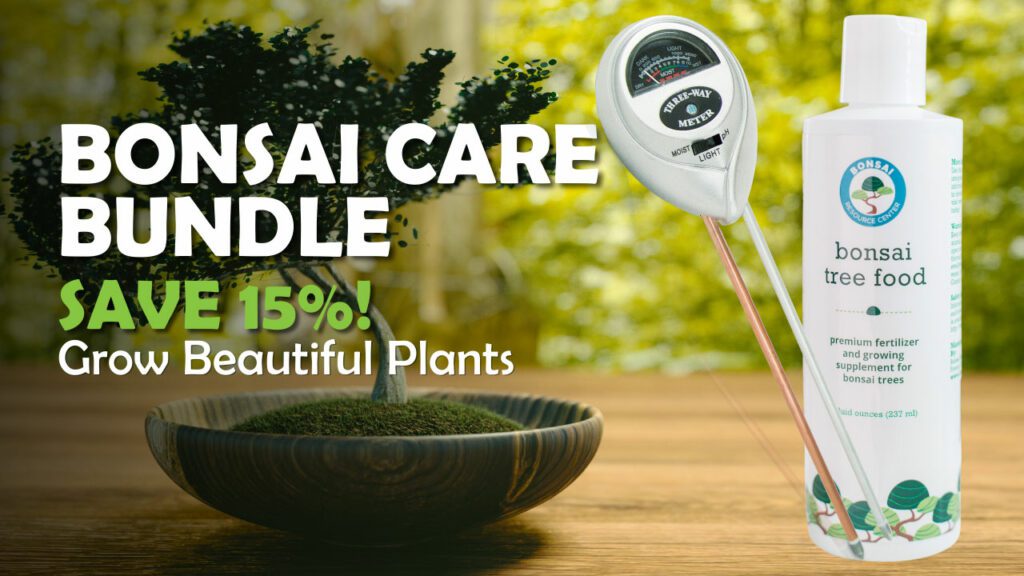A beautiful bonsai plant can take years of care to style exactly right. It’s easy to panic and worry that your time and energy has gone to waste if you notice signs that your bonsai is unhealthy.
The good news is it’s possible to catch your plant’s warning signals early and revive your bonsai before it’s too late.
How do I know if my bonsai tree is sick?
Most plants give off clear signs that something is wrong. You’ll probably notice a change in your bonsai’s appearance. Leaves turning yellow or brown are the most common indicator that your plant is sick.
Keep reading to find out how to know if your bonsai tree is sick and how to provide the correct care to revive it.
Bonsai Tree With Yellow Leaves
Don’t immediately panic if your bonsai tree has yellow leaves. Deciduous leaves turn colors before the trees lose their leaves in the fall, so yellow leaves may be perfectly natural.
That being said, seeing yellow leaves on your bonsai at other times of the year can be a warning sign. Yellow leaves can indicate one of several different issues.
- Overwatering: The most common reason leaves turn yellow is overwatering. Too much water can cause root rot, and your bonsai may not be able to get enough nutrients. Make sure that you are watering your bonsai correctly. The amount of water that bonsai need depends on the species and the season.
- Underwatering: Yellow leaves can also be caused by underwatering. This occurs most frequently during the summer. Bonsai are usually grown in small containers that dry out quickly in hot weather. Don’t expect outdoor bonsai to get enough water from rain alone during the summer.
- Overexposure to sunlight: Depending on the species, some bonsai have leaves that turn yellow when they receive too much sunlight. Find out how much sunlight your bonsai needs, and keep it in the correct conditions.
- Disease: Some plant species are susceptible to disease that turns their leaves yellow. To know if disease is the issue with your bonsai, you’ll need to find out what diseases normally affect the species you own.
Brown Leaves on Bonsai
Just like with yellow leaves, brown leaves on bonsai are sometimes natural. In the fall, you should expect deciduous trees to have brown leaves. However, if it’s not fall or if the tree is coniferous, then brown leaves are a problem.
Here are the most common reasons why bonsai trees have brown leaves:
- Overwatering: Watering your bonsai too much allows extra water to pool up and damage the roots. Damaged roots cannot provide the nutrients that plants need, so the leaves turn brown and die. The leaves will be mushy and brown if overwatering is the problem.
- Underwatering: Brown leaves can also be a sign of underwatering. The leaves will be crispy and brown if underwatering is the problem. Different plant species require different watering frequencies, so you need to find out how often your species needs to be watered to solve this problem.
- Lack of sunlight: Some plant species need more sunlight than others. Not getting enough sunlight can cause your bonsai leaves to turn brown. Find out what amount of sunlight your plant needs and provide those conditions.
- Improper environment: Speaking of providing the correct growing conditions, be sure that your bonsai has the correct environment. Many plant species commonly grown as bonsai should be kept outdoors. Bringing bonsai plants indoors for too long can cause their leaves to become brown. Keeping tropical or subtropical species outside in cool temperatures can be an equally problematic issue. Check to see what environment your plants need in order to survive.
- Pests: You may notice brown spots on leaves if pests attack your bonsai. Different pests attack different plant species, so you’ll need to see what the most common pests for your bonsai plant are. Spider mites are common pests in warm, dry weather; however, they are not the only pests that cause brown leaves.
- Lack of nutrients: It’s important to make sure your bonsai gets enough nutrients. Bonsai leaves turn brown if they lack nutrients like iron, magnesium, or nitrogen. Try using a liquid fertilizer during the growing season to make sure your bonsai gets the nutrients it needs.
Bonsai Tree With Wilting or Drooping Leaves
Seeing your bonsai tree with wilting or drooping leaves is alarming. In most cases, this problem is improper care. Usually the leaves will turn yellow on most species before they begin to wilt or droop, so check the reasons for yellow leaves above if that is the case.
If your bonsai tree is wilting or drooping leaves, but the leaves aren’t yellow (or brown), then check how you’re caring for your bonsai. Wilting or drooping commonly results from overwatering or underwatering, lack of light, or incorrect temperature.
Find out exactly what conditions your bonsai tree species needs to survive and make sure that you are providing those conditions.

Bonsai Tree With No Leaves
Don’t panic if your bonsai tree loses leaves. Remember that deciduous trees lose their leaves each fall and go dormant during the winter. It’s perfectly normal.
Of course, in some cases losing leaves can be a sign of a problem. Stress can cause trees to lose leaves. Relocation and repotting are two common reasons why bonsai lose a few leaves. If you have recently moved your bonsai to a new location or repotted it, then expect to see some leaf loss. Give your bonsai time to recover on its own before trying anything else.
Lack of water, lack of sunlight, and over-fertilizing are also reasons why bonsai trees lose leaves.
Some bonsai rapidly dry out during the summer when they are not watered often enough, and they can begin losing leaves. Increase the watering frequency, but be careful not to overcorrect and water too much; overwatering can also damage plants.
Lack of sunlight is a problem for some bonsai. Find out how much light your species requires to provide the right amount of light. If you cannot provide enough light for indoor bonsai with a window, use grow lights to supplement natural light.
Most bonsai require fertilization because they rapidly use up all the nutrients in their small pots, but be careful not to over-fertilize. Too much fertilizer can burn your plant’s roots, and the plant may lose leaves. I usually suggest only using half the recommended amount of fertilizer when fertilizing plants. You can always add more fertilizer, but it’s difficult to correct damage once it occurs. You can attempt to rescue an over-fertilized plant by changing out the soil and running water over the roots to remove excess fertilizer.
Root Rot
Root rot is a common issue with bonsai trees and can cause the tree to die. A root infection can occur when the plant get a bacterial or fungal infection from pathogens that develop in wet soil or when excess water prevents the roots from accessing oxygen.
You can look at a plant’s roots to determine whether or not it has root rot. Healthy roots are firm and white or green. Rotted roots are mushy and brown.
Root rot is difficult to discover because it happens below the soil. Chances are you’ll notice your plant’s leaves turning yellow or brown before you notice root rot.
If there is only a little root rot, you can cut off the mushy brown roots, use a root supplement, and your bonsai will have a chance of recovering. However, it’s easier to prevent root rot than to deal with it after it’s happened. Be sure you’re not overwatering your bonsai and that your bonsai’s container has adequate drainage holes.
How to Revive a Bonsai Tree That’s Sick
Don’t despair if your bonsai tree is sick; it’s possible to revive your bonsai by making adjustments. Let’s talk about the most common ways to save an unhealthy bonsai.
Adjust Watering Schedule
Overwatering is the most common problem with bonsai trees. Different species of bonsai have different water requirements: some need to be watered when the top of the soil is dry while others only need more water if the soil has completely dried out.
Find out the watering requirements for your species and follow them closely.
If your bonsai has lost leaves, it will need less water than normal. Plants release water through their leaves, so there is more danger of overwatering plants once they begin losing leaves.
Underwatering is less common, but the same rules apply. If your bonsai is suffering from a lack of water, only increase the watering frequency moderately to save the plant. This is especially true if the plant has lost leaves already. Switching from underwatering to overwatering will still kill your bonsai.
Ensure Sufficient Sunlight
Just like any other plant, your bonsai cannot live without enough light. This amount differs from species to species, so it’s important to know what your bonsai needs to thrive.
Indoor bonsai tend to suffer more than outdoor bonsai from lack of light. Sometimes the sunlight available through windows isn’t enough to meet a plant’s requirements. If you don’t have a location in your home that receives enough light, use artificial light to give your bonsai adequate light.
Remove Dead Leaves
Carefully removing dead leaves from your bonsai can allow the plant to conserve some of its energy and help it make a recovery.
If the dead leaves fall on their own, remove them from the container. In the natural environment, dead leaves would decompose and return nutrients to the soil, but the leaves will decompose too slowly in a container.
Verdict: Can you bring a bonsai tree back to life?
It is possible to revive a dying bonsai tree, so don’t immediately give up on your bonsai when you notice problems. Instead, observe your bonsai to figure out the problem and correct the issue quickly.
Hardy species will recover if the problems are corrected. In fact, some bonsai recover surprisingly fast, especially if you catch the issue early.
Some delicate bonsai trees may not recover if conditions have deteriorated too much, but it’s still worth trying to correct the problem. Losing a prized bonsai tree and having to start over from the beginning is frustrating, so don’t write off an unhealthy bonsai too soon.
FAQ: How to Revive a Ficus Bonsai Tree
Ficus are hardy bonsai ahd respond well to efforts to revive them. The most common problem with ficus is overwatering, so be sure to only water when the top inch of soil begins to dry out
If watering is not the problem, check the light and temperature next. A ficus bonsai needs lots of light and stable temperatures. Put the ficus in an east-facing window, and ensure it’s away from cold air drafts.
FAQ: How to Revive a Gardenia Bonsai
Gardenia bonsai are relatively easy to care for, and it’s possible to revive them. Be sure that you are not overwatering; only water your gardenia bonsai when the soil is almost dry.
Check that your plant is getting enough sunlight. Move your bonsai to a sunnier location if needed. Also, look for signs of pests or diseases. It’s not uncommon for pests to attack gardenia, so you may need to use an insecticide to save your gardenia bonsai.
Join Our Bonsai Care Facebook Community
In our Facebook group of bonsai lovers, we’re dedicated to creating a rich and engaging environment where plant lovers can come together and share tips, tricks, and experiences.
If you’re a bonsai lover, come join our Facebook community! We can’t wait to celebrate your successes and help you troubleshoot your care routine.
For continued success, you can explore our other articles or visit our online shop for plant care products that are sure to keep your plants boasting rich green leaves and big, bountiful blooms year-round.



